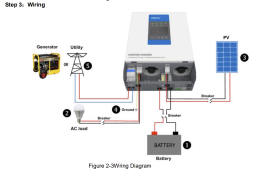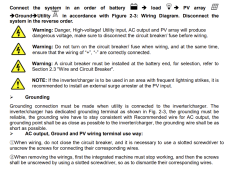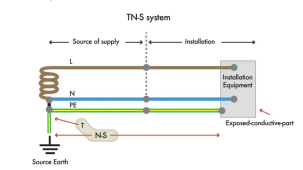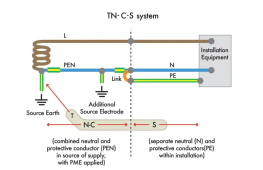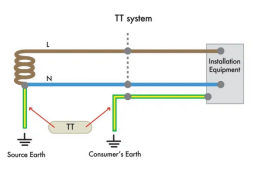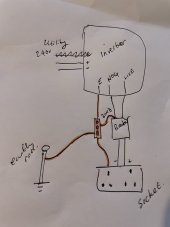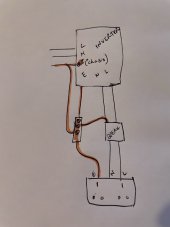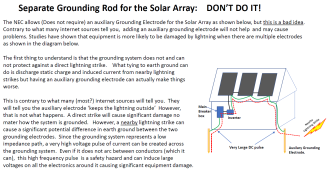Wired directly into a plug socket. There is no bond in place there.
So, what we need to understand is what happens in various fault conditions at that socket or an appliance plugged into that socket. The conditions I am thinking of are these:
1) Short from Hot to Neutral:
2) Short from Hot to PE
3) Short from Hot to Earth Ground.
For now, let's ignore the inverter and look at what a typical house circuit would do in each of these cases.
1) Short from Hot to Neutral:
There would be a very high surge of current that would pop the breaker.
2) Short from Hot to PE
For TN-S and TN-C-S systems, there would be a very large surge of current that would pop the breaker.
For a TT system, the current would flow through the earth back to the utility transformer. Depending on the resistance of the earthing system, the current may or may not be large enough to pop a breaker. (This is where RCD breakers come into play. They will pop if a very small amount of current flows through the earth ground.)
3) Short from Hot to Earth Ground.
For all 3 types of systems, the current would flow through the earth back to the utility transformer. Depending on the resistance of the earthing system, the current may or may not be large enough to pop a breaker. This is where RCD breakers come into play. They will pop if a very small amount of current flows through the earth ground.
Now let's look at what happens when the inverter is in play. However, for this, we must look at each of the fault conditions for the following inverter states:
1) Inverter wired to the grid and the output of the inverter is powered by the grid.
In all of the inverter chargers that I have studied, the socket wired to the output of the inverter will act exactly the same as if it was just another plug in the house. I can not guarantee that is the case with your inverter.....but it probably is.
2) The inverter is wired to the Grid, but the inverter output is powered by the battery.
- If there is a short between hot and Neutral, the breaker in the inverter will pop (I assume there is a breaker in the inverter) .
- If there is a short between Hot and PE..... we don't know what will happen.
* Many inverters disconnect the grid neutral from the output neutral but do not provide a low impedance path from neutral to ground. This leaves the circuit floating and if there is a short from Hot to PE, there will be no surge current to pop the breaker.
* Some inverters disconnect the grid neutral from the output, but then automatically throw a relay that generates a low impedance path from Neutral to Ground. In this case there will be a surge of current and the breaker will pop.
* Some inverters do not disconnect from the Grid Neutral from the output neutral. For TN-S and TN-C-S systems, there would be a very large surge of current that would pop the breaker. For a TT system, the current would flow through the earth back to the utility transformer. Depending on the resistance of the earthing system, the current may or may not be large enough to pop a breaker. (An RCD in the system would detect this and pop.) Note that if the inverter input is not hooked to the Grid.... then this type of inverter would always leave the output floating.
- If there is a short between Hot and Earth ground..... we do not know what will happen, If the inverter output is floating.... nothing will happen because there is no path back to the power source. If the output is bonded either internally or through the grid, then-current would flow but may or may not pop a breaker. (An RCD would be needed to detect this case and open the circuit)
Many people on the forum feel that a floating output is ok because the only way to get a shock is through direct contact with hot and neutral. Since there is no path through the ground, just touching how will not shock you. I understand this position but I am uncomfortable with leaving the output floating. I would much prefer a system where the circuits can not float to some arbitrarily high voltage in relation to ground *and* if there is a short from hot to PE, the breakers immediately pop.
